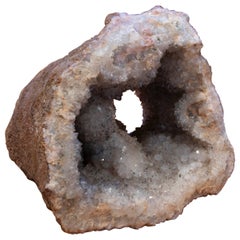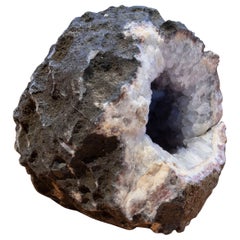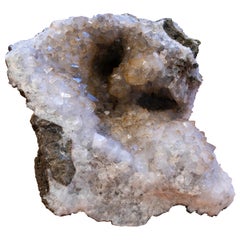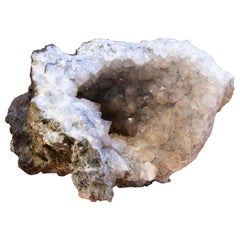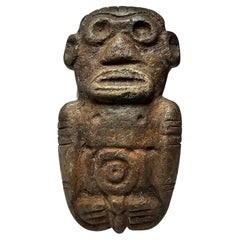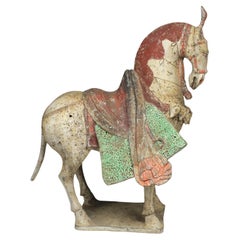Spain
to
17
1,538
1,240
20,294
15,148
12,993
6,983
5,461
2,339
1,826
1,778
1,606
1,227
1,199
1,169
1,140
805
607
557
495
428
318
241
223
136
126
110
102
89
87
83
79
39
35
26
26
22
22
21
20
20
17
14
12
12
9
8
7
7
7
6
5
5
4
2
2
2
2
2
1
1
4
Period: 15th Century and Earlier
Natural Quartz Geode Decorative Object
Located in Marbella, ES
Natural Quartz Geode Decorative Object
Category
15th Century and Earlier European Antique Spain
Materials
Quartz
Natural Quartz Geode Decorative Object
Located in Marbella, ES
Natural Quartz Geode Decorative Object
Category
15th Century and Earlier European Antique Spain
Materials
Quartz
Natural Quartz Geode Decorative Object
Located in Marbella, ES
Natural Quartz Geode Decorative Object
Category
15th Century and Earlier European Antique Spain
Materials
Quartz
Natural Quartz Geode Decorative Object
Located in Marbella, ES
Natural Quartz Geode Decorative Object
Category
15th Century and Earlier European Antique Spain
Materials
Quartz
Taino Stone Zemi Deity SCULPTURE
Located in Madrid, ES
Pre-Columbian, Caribbean area, perhaps Dominican Republic, Taino (Arawak) Indians, ca. 1000 to 1500 CE. An incredibly well-preserved stone zemi of a Taino deity shown in a crouchin...
Category
15th Century and Earlier Antique Spain
Materials
Stone
Chinese statuette of a horse
Located in EL CAMPELLO, ES
ITEM: Statuette of a horse
MATERIAL: Pottery
CULTURE: Chinese, Northern Wei Dynasty
PERIOD: 386 – 535 A.D
DIMENSIONS: 404 mm x 350 mm x 230 mm
CONDITION: Good condition. Includes Th...
Category
15th Century and Earlier Chinese Tang Antique Spain
Materials
Pottery
Sculpture of the Infant Jesus as Salvator Mundi - School of Mechelen, 15th-16th
Located in Madrid, ES
Immerse yourself in the timeless beauty of this sculpture of the Infant Jesus as Salvator Mundi, an exceptional piece originating from the renowned School of Mechelen of the 15th-16t...
Category
15th Century and Earlier Antique Spain
Materials
Bone
Chinese statuette of a horse
Located in EL CAMPELLO, ES
ITEM: Statuette of a horse
MATERIAL: Pottery
CULTURE: Chinese, Tang Dynasty
PERIOD: 618 – 907 A.D
DIMENSIONS: 560 mm x 530 mm x 200 mm
CONDITION: Good condition. Includes Thermolumin...
Category
15th Century and Earlier Chinese Tang Antique Spain
Materials
Pottery
Chinese statuette of a horse with musician
Located in EL CAMPELLO, ES
ITEM: Statuette of a horse with musician
MATERIAL: Pottery
CULTURE: Chinese, Tang Dynasty
PERIOD: 618 – 907 A.D
DIMENSIONS: 420 mm x 365 mm x 145 mm
CONDITION: Good condition. Includ...
Category
15th Century and Earlier Chinese Tang Antique Spain
Materials
Pottery
Chinese statuette of a Sogdian rider
Located in EL CAMPELLO, ES
ITEM: Statuette of a Sogdian rider
MATERIAL: Pottery
CULTURE: Chinese, Tang Dynasty
PERIOD: 618 – 907 A.D
DIMENSIONS: 560 mm x 510 mm x 175 mm
CONDITION: Good condition. Includes The...
Category
15th Century and Earlier Chinese Tang Antique Spain
Materials
Pottery
Chinese statuette of a horse with rider
Located in EL CAMPELLO, ES
ITEM: Statuette of a horse with rider
MATERIAL: Pottery
CULTURE: Chinese, Tang Dynasty
PERIOD: 618 – 907 A.D
DIMENSIONS: 520 mm x 420 mm x 180 mm
CONDITION: Good condition. Includes ...
Category
15th Century and Earlier Chinese Tang Antique Spain
Materials
Pottery
Egyptian scarab with pseudo-hieroglyphic, Anra-type
Located in EL CAMPELLO, ES
ITEM: Scarab with pseudo-hieroglyphic, Anra-type
MATERIAL: Steatite
CULTURE: Egyptian
PERIOD: Second Intermediate Period, 1700 – 1550 B.C
DIMENSIONS: 10 mm x 15 mm
CONDITION: Good co...
Category
15th Century and Earlier Egyptian Egyptian Antique Spain
Materials
Stone
Egyptian scarab with spiral design
Located in EL CAMPELLO, ES
ITEM: Scarab with spiral design
MATERIAL: Steatite
CULTURE: Egyptian
PERIOD: Second Intermediate Period, 1700 – 1550 B.C
DIMENSIONS: 12 mm x 9 mm
CONDITION: Good condition
PROVENANCE...
Category
15th Century and Earlier Egyptian Egyptian Antique Spain
Materials
Stone
Roman Mosaic, 5th Century, Italy
Located in Girona, Spain
DESCRIPTION: Roman mosaic made with marble. Very decorative piece.
Provenance: Private Swiss collection, since 1950.
CONDITION: Very good vintage condition.
DIMENSIONS: Height: 240...
Category
15th Century and Earlier Italian Classical Roman Antique Spain
Materials
Marble
Egyptian scarab with Uraeus, Ankh and neb basket (Amun trigram)
Located in EL CAMPELLO, ES
ITEM: Scarab with Uraeus, Ankh and neb basket (Amun trigram)
MATERIAL: Steatite
CULTURE: Egyptian
PERIOD: New Kingdom, 1550 – 1070 B.C
DIMENSIONS: 12 mm x 8 mm
CONDITION: Good condit...
Category
15th Century and Earlier Egyptian Egyptian Antique Spain
Materials
Stone
Greek kylix
Located in EL CAMPELLO, ES
ITEM: Kylix
MATERIAL: Pottery
CULTURE: Greek, Apulian
PERIOD: 4th Century B.C
DIMENSIONS: 56 mm x 165 mm x 115 mm
CONDITION: Good condition
PROVENANCE: Ex Belgian private collection,...
Category
15th Century and Earlier Greek Classical Greek Antique Spain
Materials
Pottery
Scarab with prenomen for Amenhotep II
Located in EL CAMPELLO, ES
ITEM: Scarab with prenomen for Amenhotep II
MATERIAL: Steatite
CULTURE: Egyptian
PERIOD: New Kingdom, XVIIIth Dynasty, 1143 – 1417 B.C
DIMENSIONS: 15 mm x 11 mm
CONDITION: Good condi...
Category
15th Century and Earlier Egyptian Egyptian Antique Spain
Materials
Stone
Roman mosaic depicting a bird
Located in EL CAMPELLO, ES
ITEM: Mosaic depicting a bird
MATERIAL: Tesserae
CULTURE: Roman
PERIOD: 3rd Century A.D
DIMENSIONS: 400 mm x 440 mm x 40 mm
CONDITION: Good condition
PROVENANCE: Ex Swiss private col...
Category
15th Century and Earlier Italian Classical Roman Antique Spain
Materials
Marble
Egyptian scarab as a commemorative of Ramesses II or prenomen of Shoshenq III
Located in EL CAMPELLO, ES
ITEM: Scarab as a commemorative of Ramesses II or prenomen of Shoshenq III
MATERIAL: Black steatite
CULTURE: Egyptian
PERIOD: New Kingdom to Third Intermediate Period, 1279 – 664 B.C...
Category
15th Century and Earlier Egyptian Egyptian Antique Spain
Materials
Stone
Greek head
Located in EL CAMPELLO, ES
ITEM: Head
MATERIAL: Marble
CULTURE: Greek, Hellenistic period
PERIOD: 3rd – 1st Century B.C
DIMENSIONS: 55 mm x 38 mm x 44 mm
CONDITION: Good condition. Includes stand
PROVENANCE: E...
Category
15th Century and Earlier Greek Classical Greek Antique Spain
Materials
Marble
Greek aryballos depicting a horse head
Located in EL CAMPELLO, ES
ITEM: Aryballos depicting a horse head
MATERIAL: Pottery
CULTURE: Greek, Corinthian
PERIOD: 7th Century B.C
DIMENSIONS: 62 mm x 55 mm diameter
CONDITION: Good condition
PROVENANCE: E...
Category
15th Century and Earlier Greek Classical Greek Antique Spain
Materials
Pottery
Greek head
Located in EL CAMPELLO, ES
ITEM: Head
MATERIAL: Marble
CULTURE: Greek, Hellenistic period
PERIOD: 3rd – 1st Century B.C
DIMENSIONS: 55 mm x 47 mm x 47 mm
CONDITION: Good condition. Includes stand
PROVENANCE: E...
Category
15th Century and Earlier Greek Classical Greek Antique Spain
Materials
Marble
Romano-Egyptian cartonnage mummy mask depicting a female head
Located in EL CAMPELLO, ES
ITEM: Romano-Egyptian cartonnage mummy mask depicting a female head
MATERIAL: Linen and Gesso
CULTURE: Egyptian, Roman period
PERIOD: 1st Century B.C – 1st Century A.D
DIMENSIONS: 20...
Category
15th Century and Earlier Egyptian Classical Roman Antique Spain
Materials
Gesso, Linen
Chinese statuette of a Fat Lady
Located in EL CAMPELLO, ES
ITEM: Statuette of a Fat Lady
MATERIAL: Pottery
CULTURE: Chinese, Tang Dynasty
PERIOD: 618 – 907 A.D
DIMENSIONS: 655 mm x 265 mm x 210 mm
CONDITION: Good condition. Includes Thermoluminescence test by Laboratory Kotalla (Reference 05B101123). Includes Certificate of Authenticity from Dutch gallery
PROVENANCE: Ex Belgian private collection, acquired from Dutch art gallery
Comes with Certificate of Authenticity and Export Licence. If you are from outside the European Union, we will have to apply for the export licence again for your country, this takes 4 to 6 weeks.
Due to the fragility and size of this piece, it can only be shipped within the European Union, United Kingdom and neighbouring countries that can be transported by road by private courier (door to door).
This beautifully-finished ceramic attendant was made during what many consider to be China’s Golden Age, the Tang Dynasty. It was at this point that China’s outstanding technological and aesthetic achievements opened to external influences, resulting in the introduction of numerous new forms of self-expression, coupled with internal innovation and considerable social freedom. The Tang dynasty also saw the birth of the printed novel, significant musical and theatrical heritage and many of China’s best- known painters and artists.
The Tang Dynasty was created on the 18th of June, 618 AD, when the Li family seized power from the last crumbling remnants of the preceding Sui Dynasty. This political and regal regime was long-lived, and lasted for almost 300 years. The imperial aspirations of the preceding periods and early Tang leaders led to unprecedented wealth, resulting in considerable socioeconomic stability, the development of trade networks and vast urbanisation for China’s exploding population (estimated at around 50 million people in the 8th century AD). The Tang rulers took cues from earlier periods, maintaining many of their administrative structures and systems intact. Even when dynastic and governmental institutions withdrew from management of the empire towards the end of the period – their authority undermined by localised rebellions and regional governors known as jiedushi –the systems were so well- established that they continued to operate regardless.
The artworks created during this era are among China’s greatest cultural achievements. It was the greatest age for Chinese poetry and painting, and sculpture also developed (although there was a notable decline in Buddhist sculptures following repression of the faith by pro-Taoism administrations later in the regime). It is disarming to note that the eventual decline of imperial power, followed by the official end of the dynasty on the 4th of June 907, hardly affected the great artistic turnover.
During the Tang Dynasty, restrictions were placed on the number of objects that could be included in tombs, an amount determined by an individual’s social rank. In spite of the limitations, a striking variety of tomb furnishings – known as mingqi – have been excavated. Entire retinues of ceramic figures – representing warriors, animals, entertainers, musicians, guardians and every other necessary category of assistant – were buried with the dead in order to provide for the afterlife. Warriors (lokapala) were put in place to defend the dead, while horses/ camels were provided for transport, and officials to run his estate in the hereafter. Of all the various types of mingqi, however, there are none more elegant or charming than the sculptures of sophisticated female courtiers, known – rather unfairly – as “fat ladies...
Category
15th Century and Earlier Chinese Tang Antique Spain
Materials
Pottery
Chinese statuette of a Fat Lady
Located in EL CAMPELLO, ES
ITEM: Statuette of a Fat Lady
MATERIAL: Pottery
CULTURE: Chinese, Tang Dynasty
PERIOD: 618 – 907 A.D
DIMENSIONS: 645 mm x 260 mm x 180 mm
CONDITION: Good condition. Includes Thermoluminescence test by Laboratory Kotalla (Reference 04B101123). Includes Certificate of Authenticity from Dutch gallery
PROVENANCE: Ex Belgian private collection, acquired from Dutch art gallery
Comes with Certificate of Authenticity and Export Licence. If you are from outside the European Union, we will have to apply for the export licence again for your country, this takes 4 to 6 weeks.
Due to the fragility and size of this piece, it can only be shipped within the European Union, United Kingdom and neighbouring countries that can be transported by road by private courier (door to door).
This beautifully-finished ceramic attendant was made during what many consider to be China’s Golden Age, the Tang Dynasty. It was at this point that China’s outstanding technological and aesthetic achievements opened to external influences, resulting in the introduction of numerous new forms of self-expression, coupled with internal innovation and considerable social freedom. The Tang dynasty also saw the birth of the printed novel, significant musical and theatrical heritage and many of China’s best- known painters and artists.
The Tang Dynasty was created on the 18th of June, 618 AD, when the Li family seized power from the last crumbling remnants of the preceding Sui Dynasty. This political and regal regime was long-lived, and lasted for almost 300 years. The imperial aspirations of the preceding periods and early Tang leaders led to unprecedented wealth, resulting in considerable socioeconomic stability, the development of trade networks and vast urbanisation for China’s exploding population (estimated at around 50 million people in the 8th century AD). The Tang rulers took cues from earlier periods, maintaining many of their administrative structures and systems intact. Even when dynastic and governmental institutions withdrew from management of the empire towards the end of the period – their authority undermined by localised rebellions and regional governors known as jiedushi –the systems were so well- established that they continued to operate regardless.
The artworks created during this era are among China’s greatest cultural achievements. It was the greatest age for Chinese poetry and painting, and sculpture also developed (although there was a notable decline in Buddhist sculptures following repression of the faith by pro-Taoism administrations later in the regime). It is disarming to note that the eventual decline of imperial power, followed by the official end of the dynasty on the 4th of June 907, hardly affected the great artistic turnover.
During the Tang Dynasty, restrictions were placed on the number of objects that could be included in tombs, an amount determined by an individual’s social rank. In spite of the limitations, a striking variety of tomb furnishings – known as mingqi – have been excavated. Entire retinues of ceramic figures – representing warriors, animals, entertainers, musicians, guardians and every other necessary category of assistant – were buried with the dead in order to provide for the afterlife. Warriors (lokapala) were put in place to defend the dead, while horses/ camels were provided for transport, and officials to run his estate in the hereafter. Of all the various types of mingqi, however, there are none more elegant or charming than the sculptures of sophisticated female courtiers, known – rather unfairly – as “fat ladies...
Category
15th Century and Earlier Chinese Tang Antique Spain
Materials
Pottery
Mary Magdalene on her way to Marseille. Castilian school, 15th century.
Located in Madrid, ES
Mary Magdalene on her way to Marseille. oil on board. Castilian school, towards the last third of the century XV. Oil on panel showing a landscape in the background with a walled city, some mountains and the shore of a watercourse (from the theme it is seen that it is the shore from sea). In the foreground and in full body, a boat with a sail appears with a circus richly dressed characters and with their respective nimbus (these decorated with geometric elements and engraved vegetables), two women and three men. Note the anecdotal detail of the fish crossing the waters under the ship. In the Golden...
Category
15th Century and Earlier Spanish Gothic Antique Spain
Materials
Other
Roman Marble Trapezophorus circa 1st-2nd Century A.D
By Europa Antiques
Located in Madrid, ES
A Roman marble trapezophorus in the Form of a Barbarian Dacian young figure.
Circa 1st-2nd century A.D.
Measure: height 24 1/4 inches (62 cm).
Property from Mr. Radu Moldovan, Skokie, Illinois
Provenance:
B.C. Holland Gallery...
Category
15th Century and Earlier Italian Classical Roman Antique Spain
Materials
Marble
Etruscan Sculpture Head, 4th Century A.D, Italy
Located in Girona, Spain
DESCRIPTION: Etruscan sculpture head made with terracotta, the art represents a young man from the 4th century. It's a very decorative piece and the state of conservation is good. I...
Category
15th Century and Earlier Italian Classical Greek Antique Spain
Materials
Terracotta
Byzantine pilgrims badge / plaque with incised cross and inscription
Located in EL CAMPELLO, ES
ITEM: Pilgrims badge / Plaque with incised cross and inscription with original suspension chain
MATERIAL: Bronze
CULTURE: Byzantine
PERIOD: 5th – 8th Century A.D
DIMENSIONS: 95 mm x ...
Category
15th Century and Earlier Unknown Medieval Antique Spain
Materials
Bronze
Stoneware jar with brown and beige glaze
Located in BARCELONA, ES
Presenting a remarkable stoneware jar adorned with an exquisite brown and beige glaze, originating from the southern region of China, specifically Cizhou. This piece is a fine exampl...
Category
15th Century and Earlier Chinese Antique Spain
Materials
Stoneware
Seated Virgin with Child (Sedes Sapientiae) from the 12th Century in Spain
Located in Madrid, ES
Technique: Tempera and oil on wood
Dimensions: 25 x 11 x 8 cm
Description:
This exceptional work from the 12th century represents the Seated Virgin with Child (Sedes Sapientiae), standing out as an artistic treasure from medieval Spain. The portrayal of the Virgin enthroned with the Child on her lap is emblematic of Romanesque art, and this particular piece is a valuable and authentic example of that era.
The current polychromy belongs to the Gothic period and overlays the original Romanesque layer. It is crucial to highlight that the current state of the artwork is the original, without any cleaning interventions, imparting a unique authenticity.
The work exhibits architectural characteristics typical of Romanesque art, evident in the sides of the throne. The rigidity and symmetry characteristic of this style are reflected in the firm presentation of the Baby Jesus, noticeable in his gesture while holding his son. The Virgin wears a crown, symbolizing her royal character as the Queen of Heaven and Creation. Both figures retain traces of polychromy on the face and attire, adding layers of history and authenticity.
While similar Romanesque Virgin...
Category
15th Century and Earlier Antique Spain
Materials
Fruitwood
Greek figurine of a little Eros riding on a dolphin, holding a lyre
Located in EL CAMPELLO, ES
ITEM: Figurine of a little Eros riding on a dolphin, holding a lyre with remains of polychromy
MATERIAL: Pottery
CULTURE: Greek
PERIOD: 4th – 3rd Century B.C
DIMENSIONS: 145 mm x 140...
Category
15th Century and Earlier Greek Classical Greek Antique Spain
Materials
Pottery
Roman Column, 1st Century A.D, Spain
Located in Girona, Spain
Roman column.
Made with marble.
1st Century A.D, Spain
Very decorative.
Good Condition.
With certificate of authenticity.
Provenance: Caldes de Mont Bui
N...
Category
15th Century and Earlier Spanish Classical Roman Antique Spain
Materials
Marble
Roman oil lamp, Type ‘Herodian’, Kennedy 3, Hadad 4
Located in EL CAMPELLO, ES
ITEM: Oil lamp, Type ‘Herodian’, Kennedy 3, Hadad 4
MATERIAL: Terracotta
CULTURE: Roman, Judaea
PERIOD: 1st Century B.C – 2nd Century A.D
DIMENSIONS: 25 mm x 62 mm x 82 mm
CONDITION: Good condition
PROVENANCE: Ex Jerusalem private collection, acquired between 1975 – 1990.
Comes with Certificate of Authenticity and Export license (If you live outside the European Union, We will have to apply for an export licence for your country and shipping will take 3 to 5 weeks.)
Oil lamps used during the time of Herod, which falls within the period of the Second Temple in ancient Judea...
Category
15th Century and Earlier Israeli Classical Roman Antique Spain
Materials
Pottery
Greek mastoid bowl
Located in EL CAMPELLO, ES
ITEM: Mastoid bowl
MATERIAL: Pottery
CULTURE: Greek, Hellenistic Period
PERIOD: 3rd – 1st Century B.C
DIMENSIONS: 90 mm x 140 mm
CONDITION: Good condition
PROVENANCE: Ex German priva...
Category
15th Century and Earlier Greek Classical Greek Antique Spain
Materials
Pottery
Greek squat lekythos with palmette
Located in EL CAMPELLO, ES
ITEM: Squat lekythos with palmette
MATERIAL: Pottery
CULTURE: Greek
PERIOD: 5th – 4th Century B.C
DIMENSIONS: 91 mm x 42 mm
CONDITION: Good condition
PROVENANCE: Ex French private collection, acquired between 1980s
PARALLEL: BRITISH MUSEUM Collection, Accession number 11.46019
Comes with Certificate of Authenticity and Export license (If you live outside the European Union, We will have to apply for an export licence for your country and shipping will take 3 to 5 weeks.)
Lekythoi are a specific type of oil flask...
Category
15th Century and Earlier Greek Classical Greek Antique Spain
Materials
Pottery
Egyptian seal with Ptah, Anubis and vulture
Located in EL CAMPELLO, ES
ITEM: Seal with Ptah, Anubis and vulture
MATERIAL: Stone
CULTURE: Egyptian
PERIOD: Middle Kingdom, 2040 – 1782 B.C
DIMENSIONS: 39 mm x 45 mm x 32 mm
CONDITION: Good condition
PROVENA...
Category
15th Century and Earlier Egyptian Egyptian Antique Spain
Materials
Stone
Greek cylindrical beaker
Located in EL CAMPELLO, ES
ITEM: Cylindrical beaker
MATERIAL: Pottery
CULTURE: Greek, Hellenistic Period
PERIOD: 3rd – 1st Century B.C
DIMENSIONS: 75 mm x 76 mm
CONDITION: Good condition
PROVENANCE: Ex German ...
Category
15th Century and Earlier Greek Classical Greek Antique Spain
Materials
Pottery
Roman statuette of Eros-Harpocrates
Located in EL CAMPELLO, ES
ITEM: Statuette of Eros-Harpocrates
MATERIAL: Bronze
CULTURE: Roman
PERIOD: 1st Century B.C – 1st Century A.D
DIMENSIONS: 82 mm x 31 mm
CONDITION: Good condition
PROVENANCE: Ex Ameri...
Category
15th Century and Earlier Italian Classical Roman Antique Spain
Materials
Bronze
Christo Carved Stone Sculpture, France, 15th Century: Museum-Quality Masterpiece
Located in Madrid, ES
Immerse yourself in the majesty of 15th-century France with this significant Christo sculpture carved in stone and polychromed, a masterpiece capturing the artistic essence of the er...
Category
15th Century and Earlier Antique Spain
Materials
Stone
Bronze Age amphoriskos
Located in EL CAMPELLO, ES
ITEM: Amphoriskos
MATERIAL: Pottery
CULTURE: Bronze Age
PERIOD: 2400 – 2000 B.C
DIMENSIONS: 140 mm x 145 mm
CONDITION: Good condition
PROVENANCE: Ex Emeritus collection (USA), collec...
Category
15th Century and Earlier Israeli Prehistoric Antique Spain
Materials
Pottery
Greek slingshot with bee and ΚΑΛΑ
Located in EL CAMPELLO, ES
ITEM: Slingshot with bee and ΚΑΛΑ
MATERIAL: Lead
CULTURE: Greek
PERIOD: 4th Century B.C
DIMENSIONS: 16 mm x 32 mm
CONDITION: Good condition
PROVENANCE: Ex English private collection, acquired between 1980 – 1990
PARALLEL: MANOV, M. & TORBOV, N., Inscribed Lead Sling Bullets with the Name of Alexander the Great and with Other Names and Symbols Found in Thrace, Archaeologia Bulgarica XX, 2 (2016), 29-43, P.38, Fig. 23
Comes with Certificate of Authenticity and Export license (If you live outside the European Union, We will have to apply for an export licence for your country and shipping will take 3 to 5 weeks.)
Sling, implement for propelling missiles, one of the first missile weapons used in warfare. It consisted of a small strap or socket of leather to which two cords were attached. The warrior, or slinger, held the ends of the cords in one hand, placed the missile snugly in the strap, and whirled the socket and missile rapidly around his head; by letting go of one cord at the right moment, the slinger could let the missile fly out of the socket at a high speed.
In the Roman army...
Category
15th Century and Earlier Greek Classical Greek Antique Spain
Materials
Lead
Greek slingshot with bee
Located in EL CAMPELLO, ES
ITEM: Slingshot with bee
MATERIAL: Lead
CULTURE: Greek
PERIOD: 4th Century B.C
DIMENSIONS: 15 mm x 28 mm
CONDITION: Good condition
PROVENANCE: Ex English private collection, acquired between 1980 – 1990
Comes with Certificate of Authenticity and Export license (If you live outside the European Union, We will have to apply for an export licence for your country and shipping will take 3 to 5 weeks.)
Sling, implement for propelling missiles, one of the first missile weapons used in warfare. It consisted of a small strap or socket of leather to which two cords were attached. The warrior, or slinger, held the ends of the cords in one hand, placed the missile snugly in the strap, and whirled the socket and missile rapidly around his head; by letting go of one cord at the right moment, the slinger could let the missile fly out of the socket at a high speed.
In the Roman army...
Category
15th Century and Earlier Greek Classical Greek Antique Spain
Materials
Lead
Greek slingshot with torch and lance
Located in EL CAMPELLO, ES
ITEM: Slingshot with torch and lance
MATERIAL: Lead
CULTURE: Greek
PERIOD: 4th Century B.C
DIMENSIONS: 18 mm x 34 mm
CONDITION: Good condition
PROVENANCE: Ex English private collection, acquired between 1980 – 1990
Comes with Certificate of Authenticity and Export license (If you live outside the European Union, We will have to apply for an export licence for your country and shipping will take 3 to 5 weeks.)
Sling, implement for propelling missiles, one of the first missile weapons used in warfare. It consisted of a small strap or socket of leather to which two cords were attached. The warrior, or slinger, held the ends of the cords in one hand, placed the missile snugly in the strap, and whirled the socket and missile rapidly around his head; by letting go of one cord at the right moment, the slinger could let the missile fly out of the socket at a high speed.
In the Roman army...
Category
15th Century and Earlier Greek Classical Greek Antique Spain
Materials
Lead
Greek slingshot with MER and NA
Located in EL CAMPELLO, ES
ITEM: Slingshot with MER and NA
MATERIAL: Lead
CULTURE: Greek
PERIOD: 4th Century B.C
DIMENSIONS: 12 mm x 26 mm
CONDITION: Good condition
PROVENANCE: Ex English private collection, acquired between 1980 – 1990
PARALLEL: DRASKOWSKI, N., and WEISS, P., Neue griechische Schleuderbleie. Tissaphernes und weitere Kommandeure, p. 148 – 149
Comes with Certificate of Authenticity and Export license (If you live outside the European Union, We will have to apply for an export licence for your country and shipping will take 3 to 5 weeks.)
Sling, implement for propelling missiles, one of the first missile weapons used in warfare. It consisted of a small strap or socket of leather to which two cords were attached. The warrior, or slinger, held the ends of the cords in one hand, placed the missile snugly in the strap, and whirled the socket and missile rapidly around his head; by letting go of one cord at the right moment, the slinger could let the missile fly out of the socket at a high speed.
In the Roman army...
Category
15th Century and Earlier Greek Classical Greek Antique Spain
Materials
Lead
Greek slingshot with bee
Located in EL CAMPELLO, ES
ITEM: Slingshot with bee
MATERIAL: Lead
CULTURE: Greek
PERIOD: 4th Century B.C
DIMENSIONS: 15 mm x 30 mm
CONDITION: Good condition
PROVENANCE: Ex English private collection, acquired between 1980 – 1990
Comes with Certificate of Authenticity and Export license (If you live outside the European Union, We will have to apply for an export licence for your country and shipping will take 3 to 5 weeks.)
Sling, implement for propelling missiles, one of the first missile weapons used in warfare. It consisted of a small strap or socket of leather to which two cords were attached. The warrior, or slinger, held the ends of the cords in one hand, placed the missile snugly in the strap, and whirled the socket and missile rapidly around his head; by letting go of one cord at the right moment, the slinger could let the missile fly out of the socket at a high speed.
In the Roman army...
Category
15th Century and Earlier Greek Classical Greek Antique Spain
Materials
Lead
Greek slingshot with (…)EM(…)
Located in EL CAMPELLO, ES
ITEM: Slingshot with (…)EM(…)
MATERIAL: Lead
CULTURE: Greek
PERIOD: 4th Century B.C
DIMENSIONS: 15 mm x 29 mm
CONDITION: Good condition
PROVENANCE: Ex English private collection, acquired between 1980 – 1990
Comes with Certificate of Authenticity and Export license (If you live outside the European Union, We will have to apply for an export licence for your country and shipping will take 3 to 5 weeks.)
Sling, implement for propelling missiles, one of the first missile weapons used in warfare. It consisted of a small strap or socket of leather to which two cords were attached. The warrior, or slinger, held the ends of the cords in one hand, placed the missile snugly in the strap, and whirled the socket and missile rapidly around his head; by letting go of one cord at the right moment, the slinger could let the missile fly out of the socket at a high speed.
In the Roman army...
Category
15th Century and Earlier Greek Classical Greek Antique Spain
Materials
Lead
Greek slingshot with torch and unidentifiable text
Located in EL CAMPELLO, ES
ITEM: Slingshot with torch and unidentifiable text
MATERIAL: Lead
CULTURE: Greek
PERIOD: 4th Century B.C
DIMENSIONS: 19 mm x 33 mm
CONDITION: Good condition
PROVENANCE: Ex English private collection, acquired between 1980 – 1990
Comes with Certificate of Authenticity and Export license (If you live outside the European Union, We will have to apply for an export licence for your country and shipping will take 3 to 5 weeks.)
Sling, implement for propelling missiles, one of the first missile weapons used in warfare. It consisted of a small strap or socket of leather to which two cords were attached. The warrior, or slinger, held the ends of the cords in one hand, placed the missile snugly in the strap, and whirled the socket and missile rapidly around his head; by letting go of one cord at the right moment, the slinger could let the missile fly out of the socket at a high speed.
In the Roman army...
Category
15th Century and Earlier Greek Classical Greek Antique Spain
Materials
Lead
Roman oil lamp with leaves and fruit
Located in EL CAMPELLO, ES
ITEM: Oil lamp with leaves and fruit, Type Bussiere B III 1
MATERIAL: Terracotta
CULTURE: Roman
PERIOD: 1st – 2nd Century A.D
DIMENSIONS: 20 mm x 65 mm x 90 mm
CONDITION: Good condit...
Category
15th Century and Earlier Italian Classical Roman Antique Spain
Materials
Pottery
Canopus Jar "Asmet", 1069 - 664 B.C, Egypt
Located in Girona, Spain
Canopus Jar "Asmet",
With certificate of authenticity.
1069 - 664 B.C, Egypt.
Good condition.
Egyptian culture are "Canopus jars". These were vessels ...
Category
15th Century and Earlier Egyptian Egyptian Antique Spain
Materials
Alabaster
Iron Age Amlash ring
Located in EL CAMPELLO, ES
ITEM: Ring
MATERIAL: Bronze
CULTURE: Iron Age, Amlash
PERIOD: 1st millenium B.C
DIMENSIONS: 20 mm x 29 mm diameter
CONDITION: Good condition
PROVENANCE: Ex English private collection...
Category
15th Century and Earlier Asian Prehistoric Antique Spain
Materials
Bronze
Iron Age Amlash ring
Located in EL CAMPELLO, ES
ITEM: Ring
MATERIAL: Bronze
CULTURE: Iron Age, Amlash
PERIOD: 1st millenium B.C
DIMENSIONS: 21 mm x 28 mm diameter
CONDITION: Good condition
PROVENANCE: Ex English private collection...
Category
15th Century and Earlier Asian Prehistoric Antique Spain
Materials
Bronze
Iron Age Amlash ring
Located in EL CAMPELLO, ES
ITEM: Ring
MATERIAL: Bronze
CULTURE: Iron Age, Amlash
PERIOD: 1st millenium B.C
DIMENSIONS: 23 mm x 32 mm diameter
CONDITION: Good condition
PROVENANCE: Ex English private collection...
Category
15th Century and Earlier Asian Prehistoric Antique Spain
Materials
Bronze
Iron Age Amlash ring
Located in EL CAMPELLO, ES
ITEM: Ring
MATERIAL: Bronze
CULTURE: Iron Age, Amlash
PERIOD: 1st millenium B.C
DIMENSIONS: 24 mm x 31 mm diameter
CONDITION: Good condition
PROVENANCE: Ex English private collection...
Category
15th Century and Earlier Asian Prehistoric Antique Spain
Materials
Bronze
Roman military cheek piece of a helmet fragment with Jupiter’s eagle
Located in EL CAMPELLO, ES
ITEM: Military cheek piece of a helmet fragment with Jupiter’s eagle
MATERIAL: Bronze
CULTURE: Roman
PERIOD: 3rd Century A.D
DIMENSIONS: 180 mm x 123 mm
CONDITION: Good condition
PROVENANCE: Ex Alison Barker private collection, a retired London barrister, acquired between 1960s – 1990s
BIBLIOGRAPHY: RUCINSKI, E., Get the picture?: Iconography of cheek pieces on Roman Imperial cavalry helmets...
Category
15th Century and Earlier Italian Classical Roman Antique Spain
Materials
Bronze
Egyptian Bronze Figure of a Seckhmet Lion-Headed Goddess, 21st/25th Dynasty, 107
Located in Madrid, ES
Egyptian Bronze Figure of a Seckhmet Lion-Headed Goddess, 21st/25th Dynasty, 1075-525 BC
The lion-headed goddess possibly seated.8x4x5 cm.Bronce...
Category
15th Century and Earlier Antique Spain
Materials
Bronze
Manteña Chair of Power Cachique of Prehispanic Ecuador 900 AD
Located in Madrid, ES
MANTEÑA CHAIR OF POWER CACHIQUE OF PREHISPANIC ECUADOR
The chair has been carved from a block of
detrital sedimentary rock, in which fossil remains can be seen. It is a calcarenite o...
Category
15th Century and Earlier Antique Spain
Materials
Stone
Important Olmec figure of Olmec ethnic dignitary from the preclassic period
Located in Madrid, ES
Important Olmec figure of Olmec ethnic dignitary from the preclassic period (2500-200 BC)
Important Olmec figure of dignitary of the Olmec ethnic group of...
Category
15th Century and Earlier Antique Spain
Materials
Precious Stone
Stone Carved Anthropomorphic Sculpture From The Recuay Culture Peru 400bc-400ac
Located in Madrid, ES
ANTHROPOMORPHIC SCULPTURE CARVED IN STONE OF THE RECUAY CULTURE PERU 400BC-400AC
Recuay is an archaeological culture of Ancient Peru that developed in the Sierra of the current Peruvian department of Áncash between 200 AD. C. until 600 d. C. It corresponds to the stage called Regional Developments, it has also been called the Huaylas or Santa culture.
Like the other Early Intermediate cultures, little is known about this culture. The most accepted position is that it was an extension of the Chavin culture, after the influence of the "White on Red" style in the region. Regarding the political aspect of the recuay, there is a hypothesis that questions their autonomy and maintains that Recuay would be part of one of the many political units that made up the Moche state.
The recuay style, characterized by its ceramics and stone sculpture, was initially described by Eduard Seler in 1893, based on ceramic specimens brought to the Ethnographic Museum in Berlin by Mariano M. Macedo. Seler named this style of pottery Recuay, based on the report that these pieces had been found in the town of Recuay. Later studies showed that this characteristic pottery was not originally from Recuay but from Copa, near Carhuaz, for which reason the name change to that of this town was proposed. Eventually the name of Huaylas was used for this culture. In 1919 Julio C. Tello explored the area and recovered lithic sculptures and Recuay-type ceramics. In the 1960s Rafael Larco Hoyle proposed changing the names of Recuay and Copa to Santa, arguing that the Recuay style had originated in the coastal regions of the Santa Valley. However, the name Recuay has persisted.
Its chronology is also highly debatable. The time of its origin between 0 and 200 AD is discussed. C. and its end or collapse is commonly set to 600 d. C. probably caused by the invasion of the Huari conquerors.
It encompassed almost the entire Callejón de Huaylas, a narrow valley fed by the Santa River and enclosed between two mountain ranges, the Cordillera Blanca to the west and the Cordillera Negra to the east. Its influence extended to the east to the Marañón river basin and to the west to the upper parts of the Santa, Casma and Huarmey valleys. To the north it reached the town of Pashash, in the province of Pallasca.
The Copa area, Marca district, Recuay province, Ancash department seems to have been the center or main nucleus of cohesion of this culture. The name of the culture would then be justified, derived from the province of the same name. Other important settlements were those of Huilcahuaín (near the current city of Ancash), Cátac, Araucay, Tambo, Jancu, Upayacu and Pashash (near the current city of Cabana).
Its main form of expression of art was through stone work (carving and masonry), inherited from its predecessor, the Chavín culture. In addition, they made sculptures in lumps that represent warriors with shields or trophy heads, with which they decorated their complex architectural constructions. They also made white clay pottery...
Category
15th Century and Earlier Antique Spain
Materials
Stone
Manteña Chair of Power Cachique of Prehispanic Ecuador 900 AD
Located in Madrid, ES
The chair has been carved from a block of
rock
These stone chairs are usually classified according to the iconographic motif carved in
the support of the seat, dividing mainly into t...
Category
15th Century and Earlier Antique Spain
Materials
Stone
